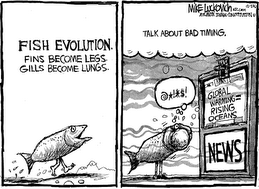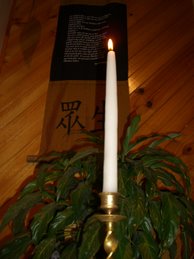
Welcomes you in or Welcomes you back to our site
 Here are some photos of Flotation tanks, ours tanks are Australian made and designed Brahman as see above
Here are some photos of Flotation tanks, ours tanks are Australian made and designed Brahman as see above Here is another style of tank popular in the USA.
Here is another style of tank popular in the USA.An isolation tank is a lightless, soundproof tank in which subjects float in salty water at skin temperature. They were first used by John C. Lilly in 1954 in order to test the effects of sensory deprivation. Such tanks are now also used for meditation, relaxation, and in alternative medicine.
Isolation tanks were originally called sensory deprivation tanks. Other synonyms for "isolation tank" include float tank, floating tank, floater tank, floatation tank, REST tank, floatation baths, John Lilly tank and sensory attenuation tank.
In the original tanks, people were required to wear complicated head-masks in order to breathe underwater. In newer tanks, epsom salt is added to the water in the tank to raise the density of the water above the density of the human body, so that the subject floats with his or her face above the water. However, since the ears are submerged when the subject is in a relaxed position, hearing is greatly reduced, particularly when ear-plugs are also used. When the arms float to the side, skin sensation is greatly reduced because the air and water are the same temperature as the skin, and the feeling of a body boundary fades. The sense of smell is also greatly reduced, especially if the water has not been treated with chlorine.
A therapeutic session in a flotation tank typically lasts an hour. For the first forty minutes it is reportedly possible to experience itching in various parts of the body (a phenomenon also reported to be common during the early stages of meditation). The last 20 minutes often end with a transition from beta or alpha brainwaves to theta, which typically occur briefly before sleep and again at waking. In a float tank the theta state can last for several minutes without the subject losing consciousness. Many use the extended theta state as a tool for enhanced creativity and problem-solving or for super learning. Spas sometimes provide commercial float tanks for use in relaxation. Floatation therapy has been academically studied in the USA and in Sweden with published results showing reduction of both pain and stress[1]. The relaxed state also involves lowered blood pressure and maximal blood flow.
Floating can be passive or active, depending on the purpose. For relaxation, one simply floats and becomes the observer of the body/mind system. Active floating has many different techniques. One may perform meditation, mantras, self-hypnosis, utilize educational programs, etc. The idea of active floating is that, when the body is relaxed, the mind becomes highly suggestible and any action taken during these states will enter the information into the sub-conscious. Floatation therapy may be used complimentary to other body work and healing methods.
Famous Users
The physicist Richard Feynman wrote about his experiences with sensory deprivation in a floatation tank in one of his popular books, Surely You're Joking, Mr. Feynman!. Feynman was invited to try the isolation tank at John Lilly's home after Lilly attended one of Feynman's popular lectures on quantum mechanics.
A therapeutic session in a flotation tank typically lasts an hour. For the first forty minutes it is reportedly possible to experience itching in various parts of the body (a phenomenon also reported to be common during the early stages of meditation). The last 20 minutes often end with a transition from beta or alpha brainwaves to theta, which typically occur briefly before sleep and again at waking. In a float tank the theta state can last for several minutes without the subject losing consciousness. Many use the extended theta state as a tool for enhanced creativity and problem-solving or for super learning. Spas sometimes provide commercial float tanks for use in relaxation. Floatation therapy has been academically studied in the USA and in Sweden with published results showing reduction of both pain and stress[1]. The relaxed state also involves lowered blood pressure and maximal blood flow.
Floating can be passive or active, depending on the purpose. For relaxation, one simply floats and becomes the observer of the body/mind system. Active floating has many different techniques. One may perform meditation, mantras, self-hypnosis, utilize educational programs, etc. The idea of active floating is that, when the body is relaxed, the mind becomes highly suggestible and any action taken during these states will enter the information into the sub-conscious. Floatation therapy may be used complimentary to other body work and healing methods.
Famous Users
The physicist Richard Feynman wrote about his experiences with sensory deprivation in a floatation tank in one of his popular books, Surely You're Joking, Mr. Feynman!. Feynman was invited to try the isolation tank at John Lilly's home after Lilly attended one of Feynman's popular lectures on quantum mechanics.
That's all Folks now you might be getting more of the picture of why Ducks lover to Float and Ponder about blogging.
Love and Blessings as always phDuck




No comments:
Post a Comment